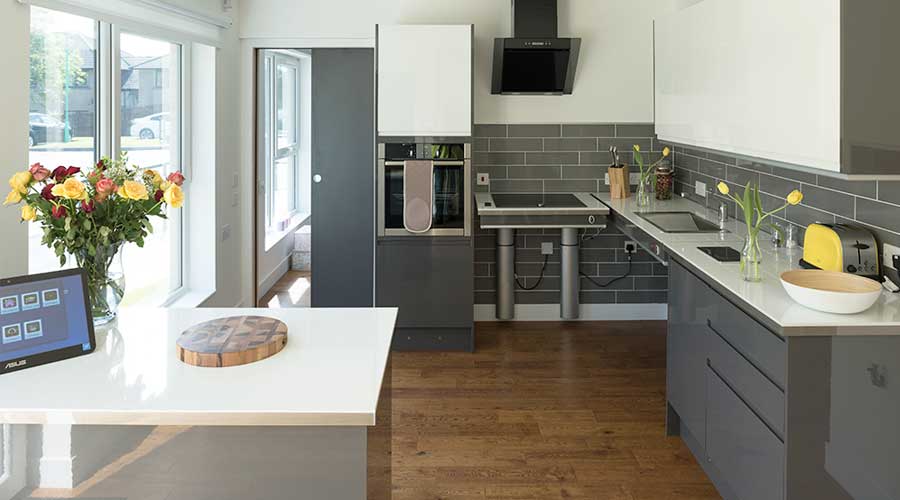
Growing elderly population fuels need for accessible solutions
The coming decades will see a significant demographic shift in the United States. The over-65 cohort will grow from 54 million Americans today to nearly 81 million in 2040.
This will be fueled in large part by the Baby Boom generation, the youngest members of which will hit 65 by the end of this decade. When that happens, it will mark the first time in American history that older people will outnumber children.
Surveys from the AARP and others show that members of this rapidly growing elderly population want to maintain their independence for as long as possible, but historic trends indicate that more than half of them will need some sort of long-term care service, and 25 percent will depend on a high level of care.
Even if only one-fourth of aging Boomers end up in an assisted living facility, this will still present both difficulties and opportunities for the senior living sector.
After the COVID-19 pandemic caused occupancy rates to drop below 90 percent for the first time in over a decade, real estate experts say the demand for senior living will soon reach its highest level ever. It’s estimated that more than two million new facilities will be needed over the next decades to house seniors in need of care.
While meeting this future demand may prove challenging for the sector as a whole, the long-term demographic trends and the strong desire amongst Baby Boomers to remain independent can also provide opportunities for senior living facilities. So too can the spending power of today’s older Americans. According to Census Bureau figures crunched by the Brookings Institution, the average real income of elderly households increased by 82 percent between 1979 and 2017, compared to just a 37 percent increase over the same period for under-65 households.
How can facilities attract new residents?
To attract this growing pool of financially well-off seniors, living facilities will have to appeal to their diverse needs and desires, and one of the best ways to do this is to ensure that residents can retain their independence and dignity regardless of their level of mobility.
For many seniors, their main reason for not wanting to move into an assisted living facility is that they fear they will lose their independence. But, if it becomes necessary to move into a facility, they want a home that allows them to enjoy their later years without having to rely on others assistance.
Does your facility want to improve lives and increase efficiency?
This is particularly true when it comes to bathroom visits. According to the CDC, the bathroom is the most dangerous room in the house and the rate of bathroom injuries increases with age. But despite the dangers posed by the slippery floors and hard surfaces, the bathroom is also where people want the most privacy.
Although the vast majority of assisted living facilities have basic safety elements like support bars and shower seats installed in their bathrooms, most are fixed in place with no regard to the age, size, shape or mobility of the users.
True usability for all residents
Senior living facilities that can provide accessible and easily adjustable bathroom solutions have better chances at appealing to new residents than those with more traditional bathroom setups.
The key is to create bathrooms that are safe for residents and caregivers, while also being flexible and adaptable. Sinks, support arms and shower chairs should be fully adjustable – not just up and down, but also side to side. This allows the residents themselves to adjust their mobility devices as their needs change, whether that’s over the course of a single day or a span of several years.
Make your facility safer for residents and workers
For couples who share a bathroom, the ability to raise or lower sinks and support arms without any special equipment means that both partners can use the bathroom safely and comfortably, even if one is a wheelchair user.
Bathrooms in senior living facilities should be able to meet the individual needs of each resident. By providing them with the ability to independently use the toilet, shower and sink, the facility can add a significant boost to the resident’s quality of life.
A flexible bathroom setup also allows plenty of space for a care worker or spouse to provide assistance if and when needed. It creates a safe environment for bathroom aid without causing undue physical stress on the resident or helper, which in turn helps facilities avoid costly injuries. But facility managers should also keep aesthetics in mind.
Want to boost residents’ confidence and make life easier for your workers?
Everyone wants a bathroom that looks good and the growing group of seniors, who can be selective when choosing their new home, are no exception.
The appearance, functionality and safety of bathrooms are all important factors when seniors have to make the difficult decision to leave their home for an assisted living facility. As the elderly US population rapidly expands and the demand for senior housing grows, there will be a race to attract the wealthy, healthy aging Baby Boomers who are ready to embrace the next phase of their lives on their own terms: with independence and dignity.
Related articles
You can find more guidance, information and inspiration in the articles listed below.














